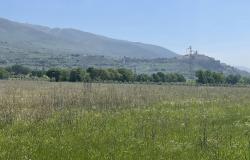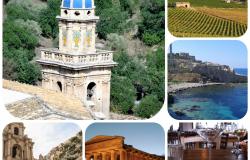Words by Carla Passino
Speak the Culture Italy is a guidebook with a difference. Rather than suggesting itineraries across Italian landmarks, it steers people through that intricate maze that is Italian culture.
Part of a series that also looks at France, Spain and Britain, it has the ambitious intent “to give readers a real grasp of [a country’s culture] and to help them develop and explore it.”
Indeed, the 300-page book is a cavalcade through all you need to know about Italy—geography, history, language, literature, philosophy, art, architecture, music, theatre, cinema, fashion, media and, of course, food and drink. Amazingly, the book manages to delve reasonably deep as well broad, going beyond the obvious (such as Dante, Raphael and Giuseppe Verdi) to introduce lesser known (which often means more modern) writers, artists, philosophers and musicians (including communist philosopher Antonio Gramsci, Arte Povera proponent Michelangelo Pistoletto, contemporary young author Niccolo Ammanniti and the hugely successful songwriter Zucchero Fornaciari).
Speak the Culture’s overview of Italian regions is concise but usually spot on, and the writers are not afraid to air their views even when they are likely to cause outrage—few Calabrians will take kindly to having their local wine dismissed as plonk; Sardianians may object to 1950s starlet Pier Angeli being selected as the local icon over Nobel writer Grazia Deledda, Prime Minister and President Antonio Segni or Cold War communist leader Enrico Berlinguer; and marketers for Trentino Alto Adige may not appreciate that what they describe as a harmonious meeting of Italian and Austrian cultures is exposed as being more of a skirmish.
Of course, I too disagreed with some of the book’s observations. For example, I don’t believe accent is necessarily indicative of (lack of) education in Italy, as many extremely well educated people still retain and often relish their very strong regional lingo. Nor do I think that Italians pay particular attention to seasonal food—many people buy, say, fresh tomatoes out of season, fuelling imports from Spain and northern Africa. However there is no doubt that, overall, Speak the Culture does provide a rare insight on Italian life, culture, and society. Rather remarkably, it also avoids most of the stereotypes that often plague efforts of this kind, painting a realistic picture of the country rather than indulging in a rose-tinted portrait of an imaginary Dolce Vita idyll. Even better, all this comes packaged in a witty, humorous style.
No, my one (small) quibble has to do with the proofreading. Italian words are widely used throughout the book, as they should be, but their usage is not always correct. For example, the extremely well researched section on contemporary Italian music is marred by a misuse of the word cantautori (plural) as singular, while the chapter on speech patterns talks of Italiano commune when it should be comune (or simply, Italiano, as everything else is a local, non-Italian dialect). That said, this kind of linguistic mistake crops up in virtually every book about Italy and, in the end, doesn’t detract too much from the content. Speak the Culture Italy remains a thoroughly enjoyable, interesting read.
Speak the Culture Italy is available for sale through Amazon.co.uk and Amazon.com.













